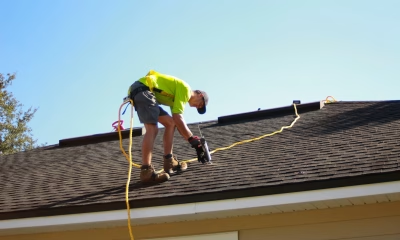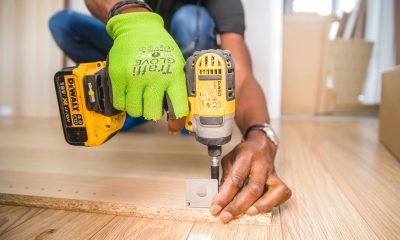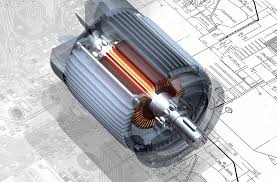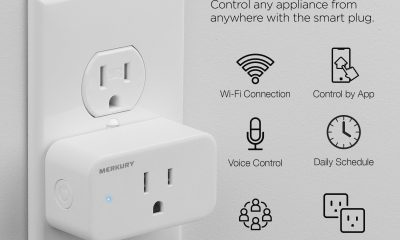Guides
What Are Important Things to Consider Before Large Home Renovations?

Renovating your home is a big decision and often, a big investment. Whether you’re modernizing an old layout, improving functionality, or increasing your home’s value, large scale renovations can truly transform your space. But let’s be honest: renovations are not all Pinterest boards and paint samples. Without proper planning, what starts as an exciting project can quickly turn into a chaotic, expensive headache.
I’ve seen it happen firsthand not because homeowners didn’t care, but because they underestimated just how many moving pieces are involved. This guide will walk you through the real world essentials I’ve learned and applied myself, both in managing projects and helping others do the same. From budget setting to contractor selection, permits, safety, and cleanup let’s cover what you really need to know to make your renovation smooth, efficient, and ultimately worth it.
1. Start with a Realistic Plan and Budget
Before anyone swings a hammer or picks out tiles, sit down and map everything out. Ask yourself: What do I want this space to look and feel like when it’s done? More importantly: What is it for?
Break your renovation into clear goals. Are you remodeling the kitchen to accommodate a growing family? Converting a basement into an income suite? Each purpose drives different design choices, timelines, and costs.
Once your goals are set, you need a comprehensive scope. This means listing all planned changes, areas involved, materials needed, and even the sequence of tasks. This helps professionals give you accurate quotes—and helps you prepare for surprises.
Budget tip: Always add at least 15% for contingencies. Hidden water damage, outdated wiring behind the walls, or changes in material prices are very real possibilities. A clear, itemized budget covering demolition, structural work, labor, and finishes will keep expectations grounded.
HGTV: How to Set a Renovation Budget – A useful walkthrough from renovation experts.
2. Choose Contractors You Can Trust (and Put It in Writing)
This can make or break your project.
Even the best materials and plans won’t help if the people doing the work cut corners or don’t show up on time. I always recommend interviewing multiple contractors ask for their license, insurance, references, and past projects. Pay close attention to how they communicate with you. Are they transparent? Do they seem rushed or vague?
Once you choose your team, insist on a written contract. At a minimum, it should include:
-
Full scope of work
-
Project timeline with milestones
-
Payment schedule
-
How changes will be handled
-
Who’s responsible for materials, permits, clean-up, etc.
These documents protect both parties and help prevent misunderstandings. Even if you’re hiring someone you know or trust, formalizing the arrangement keeps things professional.
Federal Trade Commission – Hiring a Contractor – Protect yourself with these practical guidelines.
3. Secure All Required Permits
This is where many DIYers get tripped up.
Large home renovations often require permits especially if you’re making structural, electrical, or plumbing changes. Ignoring this can result in costly fines, forced tear-outs, or issues when you sell your home down the road.
Every city or municipality has its own rules, so check with your local building department before starting. Your contractor can often handle this for you, but as the homeowner, it’s your responsibility to ensure it’s done right.
You can check your local codes through your city’s website or through resources like PermitPlace.com.
Smart move: Keep printed copies of permits and approved plans on-site. Inspectors often visit during key phases of construction, and having documents ready saves time and avoids delays.
4. Prepare the Site (and Protect What Matters)
Here’s something that doesn’t get talked about enough: renovations are messy.
Dust, paint splatters, and tool marks can damage your flooring, furniture, and fixtures if you’re not careful. I’ve seen homeowners spend thousands on new floors only to see them scratched before the project is even done.
Before any physical work begins, make the site work-ready. This includes:
-
Installing protective floor coverings
-
Wrapping counters, railings, and other surfaces
-
Moving furniture or covering it with heavy-duty sheets
-
Blocking off HVAC vents to prevent dust spread
-
Setting up clear entry/exit paths for workers
This small upfront effort can save you big money and stress later. Plus, it keeps the job safer—tripping hazards, clutter, and poor lighting are common causes of onsite injuries.
️ HomeAdvisor: How to Prepare for a Remodel – Solid advice to minimize mess and risk.
5. Stay On Top of Waste Management
This one’s often overlooked—until there’s a pile of debris in your backyard or garage.
Any big renovation generates trash: old drywall, tiles, packaging, wood scraps, insulation, etc. Without a disposal plan, it builds up quickly and can block progress or become a hazard.
Here’s how to manage it:
-
Rent a dumpster or arrange for weekly haul-aways
-
Set up labeled bins for trash, recycling, and hazardous waste
-
Make sure materials like metal, cardboard, and certain plastics are recycled
-
Post simple signs near dumping areas for easy team compliance
A clean site isn’t just safer—it’s more productive. Workers can move faster and finish details without dodging debris or waiting for cleanup.
EPA Guide to Construction & Demolition Materials – Learn what you can recycle and how to do it responsibly.
6. Expect the Unexpected
Even with the best planning, renovations rarely go exactly as scheduled. You might discover mold behind walls, delays in material delivery, or weather-related setbacks.
Don’t panic.
The key is to leave buffer time in your schedule—and stay flexible. If you’re living in the home during renovation, build in “quiet” days for your sanity. If you’re renting short-term accommodations, add at least one extra week just in case.
Also, don’t rush decisions just to stay on schedule. Whether it’s choosing lighting fixtures or approving a layout tweak, take the time to make choices you’ll be happy with long-term.
Forbes Home: What to Expect During a Remodel – Common issues and how to handle them.
7. Manage Waste Materials
A constant flow of materials should be accompanied by adequate disposal of waste to ensure that the area is clean and free of accidents or delays. A waste management plan is required to prevent trash in corners and yards that can cause tripping and pest infestation. Scheduling regular garbage pickup or using а reliable dumpster rental in Tampa or in your local area, keeps the site clean, safe, and well-managed throughout the renovation project.
This method avoids dangerous mounds that slow down renovations and annoy family members. Recycling metal scraps, cardboard boxes, and certain plastics is cost-effective and eco-friendly. Labeling bins and keeping things organized will make sure that trash is off the site faster.
Having recycling bins close to workplaces encourages proper use without interfering with the workforce. Managers check the sorting between teams to make it consistent. Posting of simple visual instructions around dumping sites strengthens behaviors and eliminates contamination.
A clean worksite also boosts morale, speeds up productivity, and the areas that have been renovated are left in a state that they can be given the finishing touches without the last-minute cleaning rush.
Final Thoughts: Your Renovation, Done Right
Renovating a home isn’t easy—but it can be incredibly rewarding when done with care and foresight. The goal is to create a space that feels right for you—that works better, looks better, and lasts for years.
By planning thoroughly, choosing your team wisely, protecting your space, and staying involved, you’ll reduce stress, stay within budget, and end up with results you can be proud of.
Just remember: success isn’t just about beautiful results. It’s also about the journey—the systems, decisions, and trust you build along the way.
Sponsored Post: This article was written in collaboration with our partner.
-

 Gadgets3 years ago
Gadgets3 years agoDoes Nest Thermostats Contain Cameras Or Microphones? Is It Safe For you?
-

 Guides1 year ago
Guides1 year ago10 Best Apps To Control All Your Smart Home Devices.
-
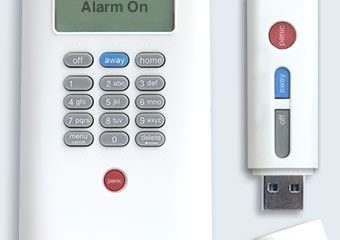
 Gadgets3 years ago
Gadgets3 years agoWhat Is The Purpose Of Red Button On The SimpliSafe Keypad?
-

 Gadgets3 years ago
Gadgets3 years agoComplete Guide About Equalizer settings for Samsung-Soundbar
-

 Accessories2 years ago
Accessories2 years agoBlink Camera’s Temperature Sensor Settings, and More
-

 Gadgets3 years ago
Gadgets3 years agoFitbit Symbols Meaning: What Do The Fitbit Icons Mean?
-

 Solutions3 years ago
Solutions3 years agoWhy is My Samsung TV Picture So Dark? Exploring the Possible Causes
-

 Accessories2 years ago
Accessories2 years agoCan Siri Control Samsung Televisions And Are Samsung TVs Homekit Compliant?








